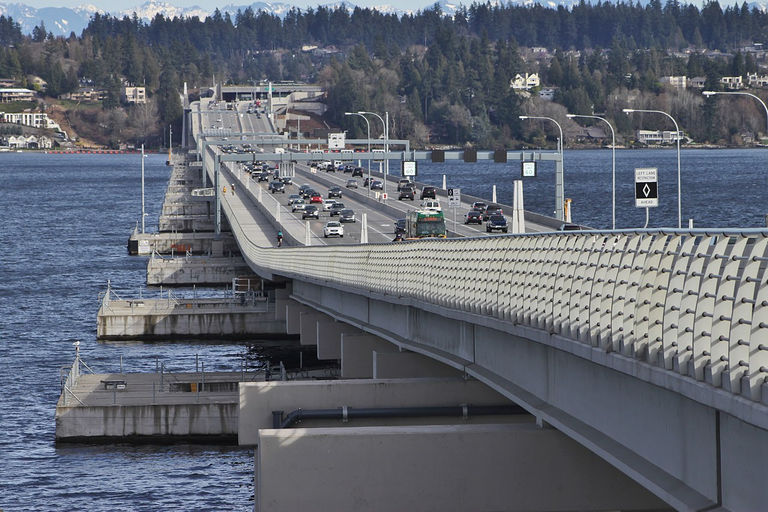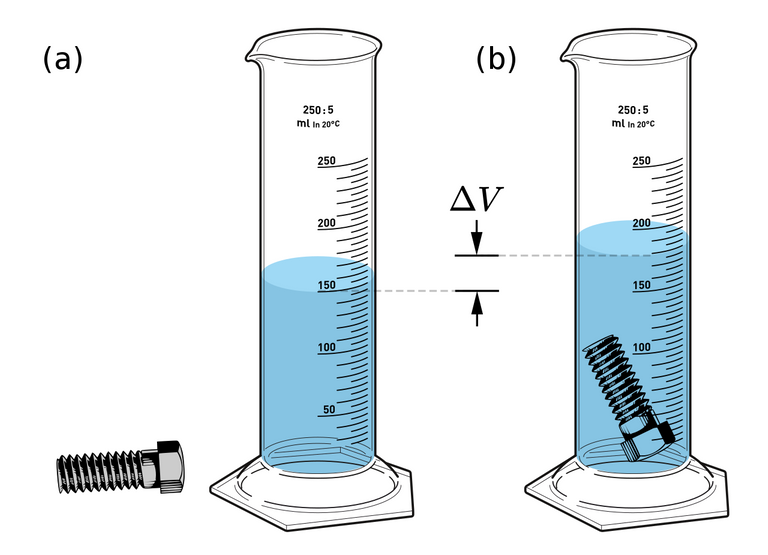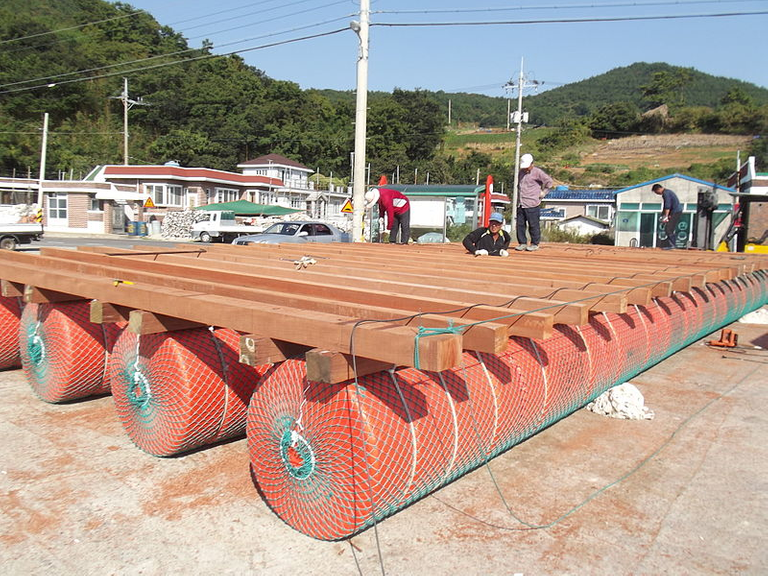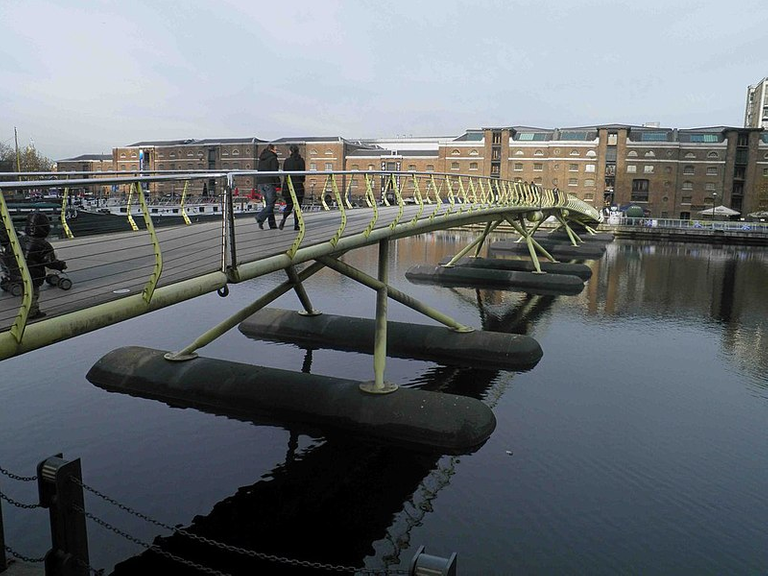Floating bridges: Do they really float freely on water or is there more to it
If you are the curious type like me, then this article might interest you. As something I occasionally do when less busy, I dig deep into things I find near impossible. Been reading extensively about floating Bridges ever since I learnt about their existence. I mean, it was quite amazing.
Imagine have a bridge float on water, though it's possible for that to happen considering the fact that ships, boat and vessels actually float on water. Besides, these means of transportation can carry very heavy loads and travel a long distance with ease without sinking, if all things being equal.
However, where my curiosity lies, is in the fact that these said bridges to some degree, can withstand winds and storms and still remain at their fixed position. Ships float and move over water bodies, while the floating bridges also float but in terms of movement from one point to another, this is restricted to some degree. This begs the question, what is holding them? Interesting right? Alright, join me as I unveil some ingenious ideas behind floating bridges and why they could serve important purpose anywhere they are found.

Evergreen Point Floating Bridge
When we talk about countries with the largest floating bridge, USA takes the lead. They have one of the largest floating bridges in the world and this is called The Evergreen Point Floating Bridge and it measures 2,349.55m (7,708.49 ft) connecting two cities in the country
Let us have a look at the structure of floating bridges and what keeps it stable on water. Archimedes principle of floatation is the central focus in understanding the mechanism of flotation of floating bridges. This principle is generally the main principle behind virtually everything thing that floats on water besides the force of surface tension. I am not a professional in this aspect, so I will not be going into details about the concept.
Archimedes' principle (also spelled Archimedes's principle) states that the upward buoyant force that is exerted on a body immersed in a fluid, whether fully or partially, is equal to the weight of the fluid that the body displaces
In summary, an object immersed in a fluid experiences a buoyant force that is equal in magnitude to the force of gravity on the displaced fluid.

Archimedes principle
The principle hold for all substances or objects that float on water. You might want to ask, how then is it that submarines float can float on water and also go deep down in water. Well the reason is not far fetched, submarines are designed and constructed in such a way that they defy the law of Archimedes if need be. Generally, an object if sunk in water will displace a volume of water that is equal to the volume of the object.
This is a very simple experiment that can be done and observed using a calibrated cylinder. One would observe an elevation the in volume of the water in the cylinder once a submersible object is dropped into the water. The change in volume of the water when measured will correspond to the volume of the inserted object.
 Measurement of volume by displacement, (a) before and (b) after an object has been submerged. The amount by which the liquid rises in the cylinder (∆V) is equal to the volume of the object
Measurement of volume by displacement, (a) before and (b) after an object has been submerged. The amount by which the liquid rises in the cylinder (∆V) is equal to the volume of the objectEver thought about the reason why hot air balloons rise?
Hot air balloons rise into the air because the density of the air (warmer air) inside the balloon is less dense than the air outside the balloon (cooler air). Balloons tend to fly better in the morning, when the surrounding air is cool.
Submarines are designed to counteract and neutralize the negative buoyancy effect. Objects that are heavier than water, would ordinarily sink, however, by virtue of their design (the submarines), they maintain a neutral buoyant state. They can either submerge or float as desired. The mechanism behind that is quite complex and as a non expert in that area, I would want to say much about that. Having an understanding of the Archimedes principle is enough for our discussion about floating bridges. So with that being said, let us look at what makes the bridge remain stable on water besides floating.
For us to discus the mechanism behind floating bridges, the key factors that must be put into consideration are - The buoyancy and anchoring system. They are the key pillars that hold the bridge and keeps it stable. Without these principal component, floating bridges can never stand. Conventional bridges generally have rods and pillars that are dug several feet deep into the ground or deep into the sea bed. These makes them more effort demanding, less cost effective and time consuming.
However, for floating bridges, they do not require any form of pillar to be dug deep into the sea. They only need what is know as Pontoons which offers the buoyancy needed for the bridge to float of water. Secondly, these pontoons cannot remain stable without being anchored to the a support system to keep them at a particular position. This is very important because without these anchoring system, the pontoons could easily be swayed off or forced to float to another location ultimately destabilizing the bridge.

Pontoons
In real sense, the floating bridge actually does float on water, however, the degree of side movement is restricted because of the anchoring system that holds them in position, so as to ensure stability. By design, the pontoons must be buoyant enough to support the bridge and then also withstand the weight or the amount of traffic that will pass through the bridge. This simply implies that, before floating bridges are constructed, a lot of factors must be put into consideration
Often, the pontoons are made from metals like steel or concrete which are then interconnected to form a long continuous floating system. The number of pontoons used for the construction, often depend on the purpose the bridge will serve and the kind of traffic or weight it will carry. The earliest use of floating bridge was done by the military. They use it for crossing rivers and transporting heavy artilleries during war.

Floating bridge made from steel pontoons
Furthermore, the size and shape pf the pontoons also matters and vary depending of the nature of the water. For deeper water or seas, or water bodies that could have turbulent flow, the pontoons used are much more in number and are much wider. The goal here is to ensure that they are not easily destabilized by the sea storm. This in a way, complements the anchoring system.
Now that we understand the main function of the pontoons, what then are the functions of the anchoring system? Do they just serve only to anchor the pontoons? Read on and you will find out more.
The anchoring system in place depends on the depth of the water and the nature of the pontoons used. When I talk about anchoring system, I do not mean the regular pillar and rods used in holding convention bridges. The anchoring system for floating bridges are quite different and not as rigid as the type with conventional bridges.

Mooring system for Lake Washington pontoon bridge. By Sergio Tattoni, CC BY-SA
They involve series of anchors that are embedded in the river bed and they are joined alongside chains and mooring lines that connect the bridge to the anchors. The anchors may be very heavy concrete blocks or steel, depending on the depth and strength of the waterway. Additionally, they may also vary.
From my findings, there are three main types of anchor used: Fluke anchors (this is particularly used for waters that are very deep and also taking into consideration the nature of the soil, it is well suited for soft soils in the lake bed), Gravity anchors (used for solid soils having slope orientation close to shores) and lastly, Drilled shaft anchors (well suited for Suitable for solid soils).
The mostly used type of anchor is the Fluke anchor because of so many reasons such as high versatility (they can work perfectly in different conditions of the sea bed, be it sandy or muddy soil), they are lighter in weight hence thereby reducing stress on the bridge, they are much easier to set up and very easy to use compared to other types. At the reference section of this article, I will drop a link to a very interesting and a well elaborate article on the design, mathematics and techniques behind the floating bridge.

Floating suspension bridge design with the anchors pointing down
Remember, the anchoring system is designed to allow the bridge to move slightly in response to changes in water level, wind, or currents. This way, the bridge will no be subject to excessive stress. So basically, you might not really notice a significant or obviously visible movement of the bridge over the water, but for a fact, they move. Just the way we do not feel the effect of earth rotation directly, which of course does not mean the earth does not rotate. Similarly, when you walk or drive through floating bridge, you might notice any movement.
Summarily, floating bridges not a myth or folklores, they exist for a fact and indeed float on water. They have long existed before now. Most of the ones built in these modern generation, are much more advanced, however, the principle still relies on Archimedes principle which takes buttresses and important factor - buoyancy. The key system holding floating bridges over water bodies are the Buoyancy and anchoring system.
Building floating bridges seem to save more cost, uses less resources and are much easier to build when you compare them to the conventional types that require dug pillars into the ground. They are much better because they can resist against earthquakes. However, they face great threat from strong sea storms and waves, if they are not well designed.
Alright, I am trusting you grab one or two today. This is the best I can do, probably an engineer will a better job than this. That will be all for today! Thanks for the read.
References
•How are floating bridges built?
•Pontoon Bridges
•Buoyancy: Archimedes Principle
Congratulations @cyprianj! You have completed the following achievement on the Hive blockchain And have been rewarded with New badge(s)
Your next target is to reach 165000 upvotes.
You can view your badges on your board and compare yourself to others in the Ranking
If you no longer want to receive notifications, reply to this comment with the word
STOPTo support your work, I also upvoted your post!
Check out our last posts:
Thanks for your contribution to the STEMsocial community. Feel free to join us on discord to get to know the rest of us!
Please consider delegating to the @stemsocial account (85% of the curation rewards are returned).
Thanks for including @stemsocial as a beneficiary, which gives you stronger support.
I must say I learnt a lot on this post, you have greatly increased my curiosity and desire to explore these bridges some day.
Thank you for the amazing write up